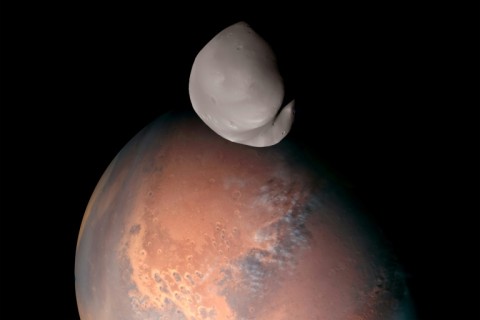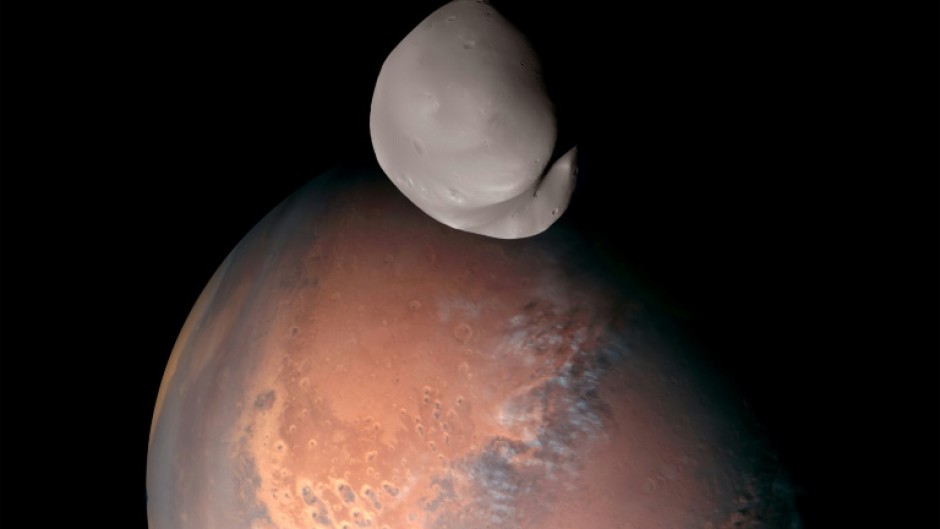
The United Arab Emirates' Hope space probe on Monday revealed Mars' smaller moon Deimos in unprecedented detail, shedding new light on the origin of the mysterious lumpy satellite.
The probe, the Arab world's first interplanetary mission, has been orbiting Mars for two years, regularly flying past Deimos and its big sibling moon Phobos.
It came within 110 kilometres (68 miles) from Deimos, a rocky object the shape of a bean just 12 kilometres wide, according to the Emirates Mars Mission (EMM).
The probe -- named "Al-Amal", Arabic for "Hope" -- sent back to Earth the most precise images and observations of the moon ever captured, using instruments that measure the infrared and ultraviolet wavelengths.
It also observed for the first time the far side of the moon, revealing regions whose compositions have never been studied, the mission said.
The probe could also prompt new debate over how exactly the strange moons ended up in the Martian orbit.
"We are unsure of the origins of both Phobos and Deimos," the EMM's science lead Hessa Al Matroushi said in a statement.
One leading theory is that the two moons were once asteroids passing by when they were unexpectedly captured into the orbit of Mars.
But Al Matroushi said that "our close observations of Deimos so far point to a planetary origin".
Christopher Edwards, a scientist in charge of one of the probe's instruments, said that "both of these bodies have infrared properties more akin to a basaltic Mars" than an asteroid.
That could mean the rocky bodies were once part of Mars and were potentially shot out into orbit by a massive impact.
- Mission extended -
UAE Prime Minister Sheikh Mohammed bin Rashid Al Maktoum tweeted that the probe "refutes" the theory that the moon was once an asteroid.
Instead, it showed that the moon was once part of Mars and then "separated from it millions of years ago," similar to how our own Moon is thought to have once been part of Earth, he said.
The UAE Space Agency announced that it was extending the mission for another year, during which Hope will continue to fly past Deimos and collect more data.
The probe launched in 2020 and arrived in Mars' orbit in 2021.
It has an unparalleled view of Deimos because it orbits at a greater distance than other Mars missions, aiming to get a comprehensive image of the red planet's weather dynamics.
That makes it much closer to the wide orbit of Deimos, which spins some 23,000 kilometres from Mars.
The UAE is also planning to land an uncrewed rover on the Moon next year.

